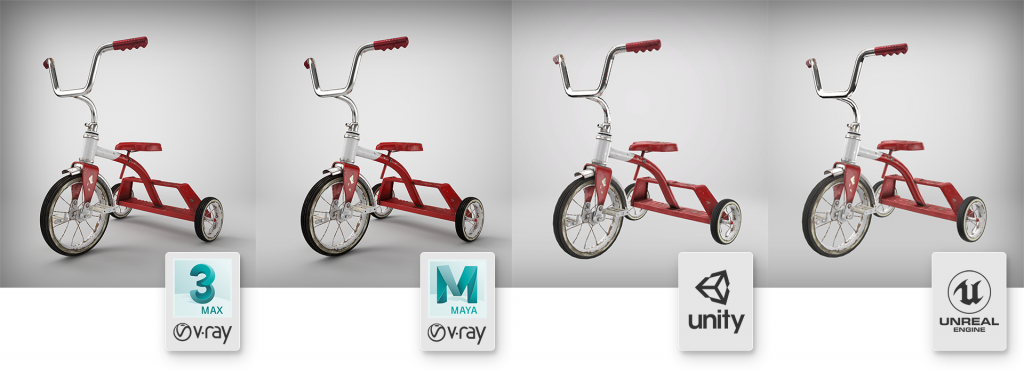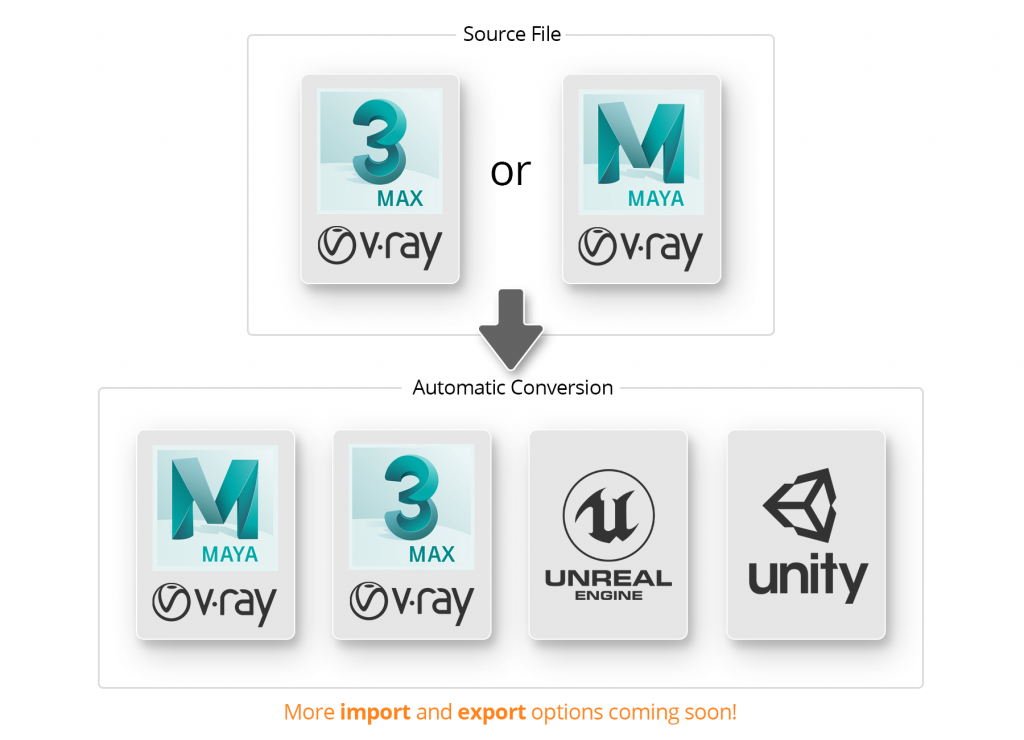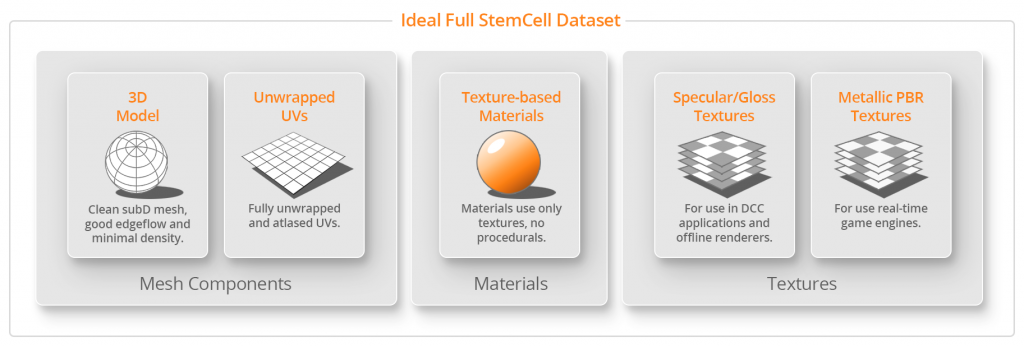
StemCell Introduction
With 45,000 artists publishing to TurboSquid, file format conversions and portability are extremely inconsistent and error prone. In addition, TurboSquid is tasked with converting 3D models for customers (including CheckMate ones) on a daily basis. This is not merely a matter of converting between major 3D applications; it includes an increasingly diverse list of apps and pipelines that all need 3D content, and it is becoming highly problematic to keep up. With a continually growing list of customers all needing content for such a wide array of outputs such as film, gaming, VR and archviz, the StemCell project is a TurboSquid innovation set to solve content portability and flexibility challenges now and into the future.
Producing StemCell models offers contributing artists a far more streamlined workflow for publishing, this means they can spend more time producing content instead of trying to master the art of conversions. Artists simply need submit their StemCell ready model from their native application. Once a StemCell is submitted, our internal infrastructure will automate the process of converting it into all other supported native experiences.
A StemCell workflow should also help attract more customers using different platforms as the library rapidly grows to include models for many more end-user applications.
StemCell Dataset
In order for TurboSquid to automate file conversions to multiple native formats, we must make sure artists supply a minimal framework of components. The minimal dataset for a StemCell is quite simple and by design, is limited to a very small number of discrete components. Most StemCell components are immediately exchangeable, such as geometry and UVs. However, other components may need simple conversions to go from DCC applications to game engines. The basic components consists of:
- Geometry – Clean meshes that are not overly dense. Models should be mostly quads and/or tris, and clean edge flow is preferred.
- UVs – Since StemCell content is texture based, it is preferred that all models be fully unwrapped. Clean, atlased and logically organized UVs are preferred, though auto-unwrapped UVs are acceptable as long as distortion is minimal.
- Texture-based Materials – Materials should be kept simple. No procedurals will be allowed nor will specialized shaders such as renderer specific car paint, SSS, or other proprietary shaders. Instead, the materials used should be created with renderer specific standard materials (i.e. V-Ray Standard, C4D Physical, Mental Ray Arch & Design).
- Textures – It is preferable that textures be supplied as both standard Specular/Gloss and PBR Metallic workflows. Specular/Gloss textures will be used by most offline renderers such as V-Ray or Arnold, while PBR Metallic will be used by most game engines such as Unreal or Unity.
It is not an absolute requirement to supply both Specular/Gloss and PBR Metallic textures. We understand that most artists will be accustomed to either one or the other but not usually both. However, we do encourage contributing artists to learn both, since this will exponentially increase the amount of available conversions to a wider variety of formats which ultimately means more possible sales.
Limitations
Since StemCell is asking artists to simplify their workflow, we understand that there will be limitations introduced to the types of content contributors can create for StemCell. Currently, these limitations include:
- Hair & Fur
- Sub-Surface Scatter
- Refraction (game engines)
- Volumes
- Rigging
- Dynamics/FX
- Animations
That’s not to say that TurboSquid doesn’t have plans to address these issues, but in its current state, the StemCell project is looking to solve the immediate goal of offering useful content, in native environments, to a wide range of varied customers.

StemCell Native Application Support
Initially, native StemCell support will be limited to the most popular applications and renderers. TurboSquid already has a large stable of 3Ds Max contributors, but with StemCell, we hope to expand to more artists such as Maya, C4D, and Blender artists. Via StemCell, we also plan to support reliable exports to not only popular DCC apps and offline renders, but also popular game engines as well as often “core files” are needed by customers using proprietary game engines.
Automated Conversion Support
| Phase I (current) | Phase II | Phase III |
| DCC/Offline | ||
| 3DsMax/V-Ray | 3DsMax/Mentalray | 3DsMax/Arnold |
| Maya/V-Ray | Maya/Mentalray | Maya/Arnold |
| Cinema 4D/Physical | Cinema 4D/Arnold | |
| Blender/Cycles |
| Phase I (current) | Phase II | Phase III |
| Gaming | ||
| Unity | Lumberyard | Stingray |
| Unreal |





